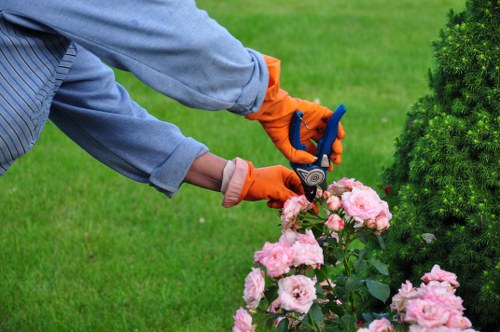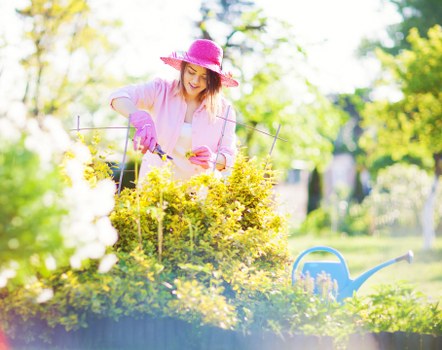Garden Maintenance in Victoria: A Comprehensive Guide
Introduction to Garden Maintenance in Victoria

Maintaining a beautiful garden in Victoria requires a blend of knowledge, dedication, and the right techniques. The climate in Victoria, known for its temperate conditions, offers an ideal environment for a wide variety of plants. However, successful garden maintenance goes beyond mere planting. It involves regular care, seasonal adjustments, and proactive measures to ensure your garden thrives all year round.
Whether you’re a seasoned gardener or a beginner, understanding the intricacies of garden maintenance in Victoria can help you create and sustain a vibrant outdoor space. From soil preparation to pest control, this guide covers essential aspects to keep your garden healthy and aesthetically pleasing.
In the following sections, we will delve into the best practices for garden maintenance tailored specifically to Victoria’s unique climate and soil conditions. By implementing these strategies, you can enhance the beauty and functionality of your garden, making it a delightful haven for both you and your neighbors.
Seasonal Garden Maintenance Tasks

Spring Maintenance
Spring is a critical time for garden maintenance in Victoria. As the weather warms, it's essential to prepare your garden for the growing season. Start by clearing out any debris left from winter, such as fallen leaves and dead plant material. This not only improves the appearance of your garden but also reduces the risk of pests and diseases.
Additionally, spring is the perfect time to enrich your soil. Incorporate compost or well-rotted manure to enhance soil fertility and structure. Planting new flowers, shrubs, and trees during this season ensures they have ample time to establish before the heat of summer sets in.
Regular watering is crucial in spring, especially for newly planted species. Ensure that your irrigation system is functioning correctly and adjust watering schedules based on rainfall and temperature fluctuations.
Summer Garden Care

Managing Heat and Drought
Victoria’s summers can bring intense heat and occasional drought conditions. To maintain a healthy garden during these times, implement efficient watering practices. Drip irrigation systems are highly recommended as they deliver water directly to the plant roots, reducing evaporation and waste.
Mulching is another effective strategy. Applying a layer of organic mulch around plants helps retain soil moisture, regulate soil temperature, and suppress weed growth. Choose mulches like bark, straw, or compost, which gradually decompose and enrich the soil.
Pruning is also essential during summer. Remove dead or overgrown branches to improve air circulation and reduce the risk of fungal infections. Regular pruning promotes healthier growth and enhances the overall appearance of your plants.
Autumn Garden Preparation

Preparing for Cooler Months
As autumn approaches, transitioning your garden to prepare for cooler weather is vital. Begin by clearing fallen leaves and other debris, which can harbor pests and diseases. This cleanup also prepares the soil for the next planting season.
Autumn is an ideal time for planting perennials, bulbs, and woody plants. The cooler temperatures and increased rainfall provide optimal conditions for root establishment. Additionally, apply a balanced fertilizer to support plant growth and resilience.
Protecting your garden from frost is crucial. Use frost blankets or row covers to shield sensitive plants during unexpected cold snaps. Incorporating windbreaks can also help reduce the impact of chilly winds on your garden.
Winter Garden Maintenance

Ensuring Survival During Winter
Winter in Victoria, while milder compared to other regions, still requires specific garden maintenance practices. Focus on protecting your plants from cold temperatures by mulching beds and covering vulnerable species. This insulation helps maintain soil temperature and prevents root damage.
Prune deciduous trees and shrubs while they are dormant to encourage healthy growth in the spring. Remove any damaged or diseased branches to prevent the spread of pests and illnesses.
Watering should be adjusted during winter months. While plants require less water, ensuring that the soil does not become completely dry is important. Water during dry spells, preferably in the early morning to allow plants to absorb moisture before nighttime temperatures drop.
Choosing the Right Plants for Victoria
Climate-Resilient Plant Selection
Selecting plants that are well-suited to Victoria’s climate is fundamental for successful garden maintenance. Opt for native species, which are adapted to the local environment and require less maintenance. Native plants are more resistant to local pests and diseases, reducing the need for chemical interventions.
Consider the specific conditions of your garden, such as sunlight exposure, soil type, and moisture levels, when choosing plants. Group plants with similar requirements together to simplify care routines and ensure each plant thrives in its designated spot.
Incorporate a mix of evergreen and deciduous plants to provide year-round interest. Evergreens maintain structure and color during the winter, while deciduous plants offer vibrant blooms and foliage changes in other seasons.
Soil Preparation and Fertilization
Building Healthy Soil
Healthy soil is the foundation of a thriving garden. Begin by testing your soil to determine its pH and nutrient levels. Victoria’s soils can vary, so understanding your specific soil composition helps in making informed amendments.
Incorporate organic matter, such as compost, to improve soil structure, drainage, and aeration. Organic amendments also enhance microbial activity, which is essential for nutrient cycling and plant health.
Fertilization should be tailored to the needs of your plants. Use balanced fertilizers that provide essential nutrients like nitrogen, phosphorus, and potassium. Avoid over-fertilizing, as this can lead to nutrient runoff and environmental harm.
Pruning and Trimming Techniques
Encouraging Healthy Growth
Regular pruning is crucial for maintaining plant health and aesthetics. It involves removing dead, diseased, or overcrowded branches to promote better air circulation and sunlight penetration. Pruning also helps shape plants, enhancing their natural form and preventing unwanted growth.
Different plants require specific pruning techniques. For example, flowering shrubs may need pruning after they bloom to encourage next season’s flowers, while fruit trees benefit from annual pruning to improve fruit quality and yield.
Always use clean, sharp tools to make precise cuts. This minimizes the risk of plant stress and disease transmission. Follow proper pruning guidelines to ensure the longevity and vitality of your plants.
Pest and Disease Management
Protecting Your Garden
Effective pest and disease management is essential for maintaining a healthy garden. Start by regularly inspecting plants for signs of pests or diseases. Early detection allows for prompt intervention before issues escalate.
Implement integrated pest management (IPM) practices, which combine biological, cultural, and chemical methods. Encourage beneficial insects, such as ladybugs and predatory beetles, which help control pest populations naturally.
Avoid excessive use of chemical pesticides, as they can harm beneficial organisms and disrupt the ecosystem. When necessary, choose eco-friendly and targeted treatments to minimize environmental impact.
Irrigation and Watering Strategies
Efficient Water Management
Proper irrigation is vital for garden maintenance in Victoria. Implement efficient watering systems like drip irrigation or soaker hoses, which deliver water directly to the base of plants, reducing evaporation and runoff.
Watering schedules should be adjusted based on seasonal changes and rainfall patterns. Early morning is the best time to water, as it allows plants to absorb moisture before the heat of the day and reduces the risk of fungal diseases.
Monitor soil moisture levels regularly to prevent overwatering or underwatering. Using mulch can help retain soil moisture, reducing the need for frequent watering and conserving water resources.
Lawn Care and Maintenance
Achieving a Lush Lawn
A well-maintained lawn adds beauty and value to your garden. Start by choosing the right type of grass suited to Victoria’s climate, such as fescue, ryegrass, or buffalo grass. Each type has different maintenance requirements and tolerance levels.
Mowing is a key aspect of lawn care. Keep mower blades sharp and mow at the recommended height for your grass type to promote healthy growth and prevent damage. Avoid cutting more than one-third of the grass height at a time to reduce stress on the lawn.
Regular fertilization and aeration are also important. Fertilize your lawn in spring and autumn to provide essential nutrients, and aerate the soil annually to improve water and nutrient penetration.
Composting and Waste Management
Sustainable Garden Practices
Composting is an eco-friendly way to manage garden waste and enrich your soil. Collect organic materials like kitchen scraps, leaves, and grass clippings to create nutrient-rich compost. This process not only reduces landfill waste but also provides a natural fertilizer for your garden.
Maintain your compost pile by balancing green and brown materials and ensuring adequate moisture and aeration. Regularly turning the pile accelerates decomposition and prevents unpleasant odors.
Utilize compost in your garden beds, around trees, and in potted plants to improve soil fertility and structure. Composting is a sustainable practice that supports the health and productivity of your garden.
Sustainable Gardening Practices
Eco-Friendly Maintenance Tips
Sustainable gardening emphasizes environmental responsibility and resource conservation. Incorporate practices that reduce your garden’s ecological footprint, such as using native plants, minimizing chemical use, and conserving water.
Implementing rainwater harvesting systems can help collect and store rainwater for irrigation, reducing reliance on municipal water sources. Additionally, using organic fertilizers and natural pest control methods supports a healthy ecosystem.
Promote biodiversity by planting a variety of species, which attracts beneficial insects and wildlife. Diverse plant life also enhances the resilience of your garden against pests and diseases.
Hiring Professional Garden Maintenance Services
When to Seek Expert Help
While DIY garden maintenance can be rewarding, there are times when hiring professional services is beneficial. Experts can provide specialized knowledge and skills, ensuring that your garden receives the best possible care.
Professional gardeners can assist with complex tasks such as landscaping design, soil analysis, and pest management. They also have access to tools and resources that may not be readily available to homeowners.
Outsourcing maintenance can save time and reduce the physical strain of gardening, allowing you to enjoy a beautiful garden without the hassle of intensive upkeep. Consider professional services for large or intricate gardens, or when facing persistent maintenance challenges.
DIY Garden Maintenance Tips
Enhancing Your Gardening Skills
If you prefer to manage garden maintenance yourself, there are several strategies to enhance your effectiveness. Start by educating yourself on gardening techniques and the specific needs of your plants. Utilize resources such as gardening books, online tutorials, and local workshops.
Invest in quality gardening tools to make maintenance tasks easier and more efficient. Essential tools include pruners, a spade, a trowel, a watering can or hose, and protective gear like gloves and hats.
Stay organized by creating a maintenance schedule that outlines regular tasks such as weeding, watering, fertilizing, and pruning. Consistency is key to preventing problems and ensuring the overall health of your garden.
Tips for Successful Garden Maintenance in Victoria
Maximizing Garden Health and Beauty
To achieve and maintain a thriving garden in Victoria, consider the following tips:
- Plan Ahead: Seasonal planning helps anticipate and prepare for changes in weather and plant needs.
- Choose the Right Plants: Select species that are well-suited to Victoria’s climate and soil conditions.
- Maintain Soil Health: Regularly amend your soil with compost and organic matter to promote fertility.
- Water Wisely: Implement efficient irrigation systems and adjust watering based on seasonal demands.
- Monitor for Pests: Regular inspections and natural pest control methods help keep your garden healthy.
- Prune Appropriately: Proper pruning techniques encourage robust growth and enhance plant appearance.
- Embrace Sustainability: Adopt eco-friendly practices to support a healthy and resilient garden ecosystem.
Conclusion

Effective garden maintenance in Victoria involves a combination of strategic planning, regular care, and sustainable practices. By understanding the seasonal requirements, choosing appropriate plants, and implementing best maintenance techniques, you can cultivate a beautiful and thriving garden year-round.
Whether you manage your garden independently or seek professional assistance, prioritizing the health and aesthetics of your outdoor space ensures it remains a source of pride and enjoyment.
Contact us today to learn more about our garden maintenance services and how we can help you achieve the garden of your dreams.